Hi spatial visitors! I’m reporting today the hassle I had when trying to record with the Roland CS-10EM microphone using the Tascam DR-40X PCM (WAV) recorder. Maybe this can be useful for someone who is on a similar quest.
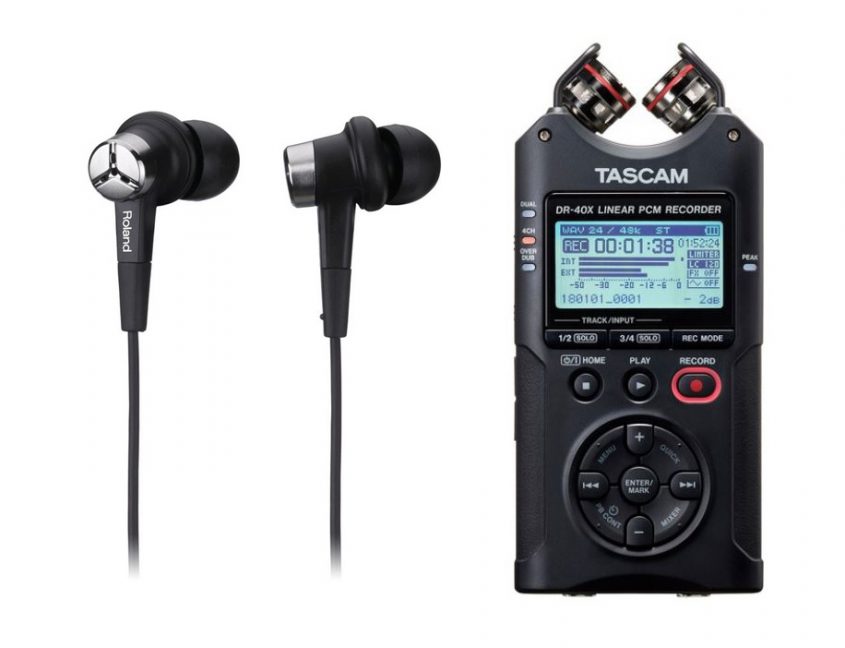
For some years I had this amazing Roland CS-10EM that records sound directly from your ears and I think they are very useful for recording the sound of multichannel installations and soundscapes. Obviously, as everyone’s head is different (HRTF) the accuracy of binaural reproduction will change from person to person, but it’s still quite good for recreating the stereo field and the spatial reproduction back to my own ears is perfect, so I think it’s quite a special microphone to have.
The way I used to do it before was through a simple Sony ICD-PX333 audio recorder. It worked fine, but there was no input volume control and the format was mp3 at 192kbps. As I was recently working on a more professional video recording of a multichannel installation, I decided this had to be done in a PCM WAV format. I wanted to use the Tascam DR-40X, as this is my main microphone for going out in nature and doing field recording. It allows 2 external inputs, so “why not?”, I thought!
The CS-10EM is a microphone that takes “plug-in power”, similarly to lavalier or electret mics. These mics usually require some low voltage to function and plug-in power is usually provided by some devices in a range of 1.5-9V. This is also known as “bias voltage”.
The Tascam DR-40X does not provide this kind of output voltage to power the external microphones. Instead, it provides 48V (or 24V) phantom power, which is the standard for condenser mics. Probably they could not add more circuitry to the DR-40X design and since they didn’t expect people to use this with lavalier or this binaural mic, they just ignored this possible feature. Other Tascam models also lack a plug-in power feature, except for the DR-10 line, which is designed specifically for the lavaliers.
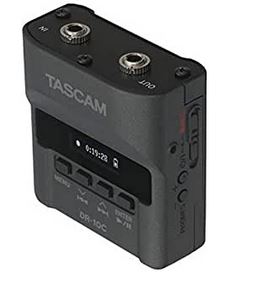
My plan wasn’t to buy another portable recorder (and the DR-10 line seems overpriced). I prefer carrying a single portable recorder when possible and add external microphones as needed. So what could be done?
One possibility was to design a circuit to convert the 48V/24V phantom power to something between 2-10V (as the CS-10EM manual specifies). Googling a bit, I found someone looking for the same application in the Arduino forum. There I saw that using a voltage regulator (step down) maybe wouldn’t work (higher voltage regulators seem to require more current than what phantom power can provide). One schematic using a transformer was posted, but I didn’t have the time to build the circuit (plus adapting it to stereo) and test it.
Another discussion on StackExchange suggested a simple voltage divider to make it work. This would require testing, soldering connectors and making some sort of adapter. I wasn’t convinced this would provide a clean line output and considering I only had a few days to do this and I was super busy with other projects, I looked for another, quicker, solution.
I found the RØDE Microphones VXLR+ adapter, it converts 48V to 5V. I don’t know what type of circuit is inside, but it’s RØDE so I imagine it’s well-made. It’s a bit overpriced (£21 on Amazon UK in 09/2021), but it seemed convenient. The issue is that I had to buy 2 of them to connect the 2 channels. The XLR input fits fine the Tascam, but to join the L and R lines with the CS-10EM it was necessary a splitter/adapter cable. More specifically: Y splitter cable, 3.5mm mono (L and R) male to 3.5mm stereo female.
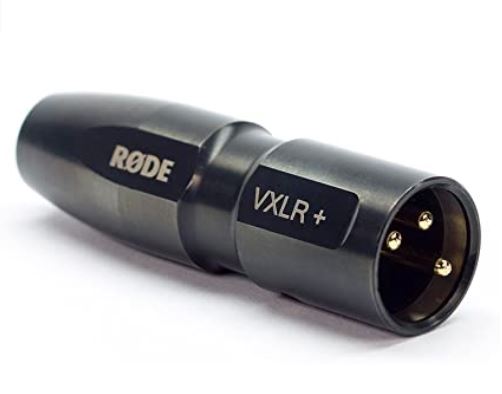
So I wasted a few more hours looking for this specific connector. I found one on eBay UK but it was 1.5 metres long! That’s bad for the sound quality and more wiring on the way. At home, I had a more conventional Y splitter cable, but it was 6.35mm, requiring more adapters, which compromises the sound quality and make everything bulkier. So I thought about soldering my own cable, but I don’t like working with 3.5mm sockets and my time was compressed..so finally, I found the right splitter on eBay from a shop (BestPlug) from Germany. A bit expensive (12.88€ / £11 with shipping and VAT ) but it looked good quality and it was only 15cm long, so I went for it.
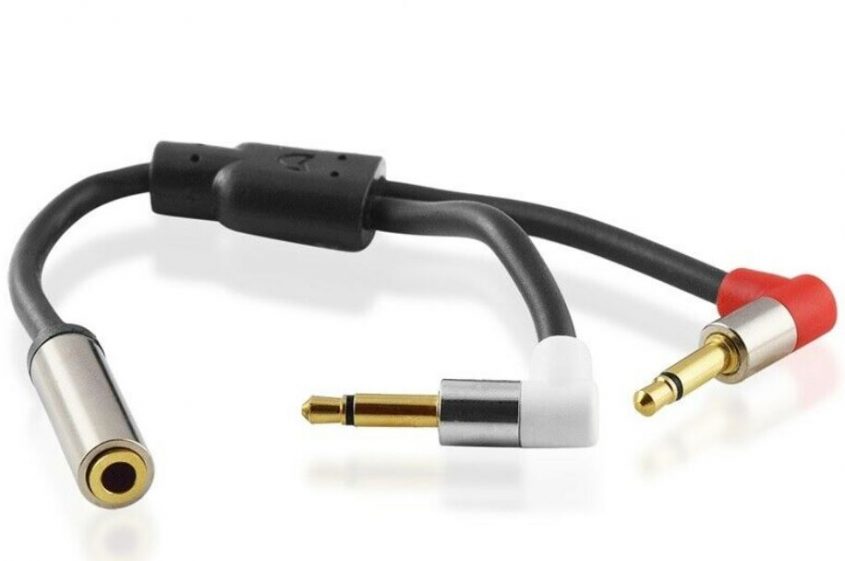
Now I can finally record with those binaural mics on the Tascam, phew! This upgrade cost me about £55 and I know I could have bought another simple PCM recorder for less, like a Philips DVT1110 (£35), but as I said, I prefer to carry a single device for practical reasons. It seems a bit silly to use 2 adapters to step down the voltage since a single one would be more power-efficient, but for now, that has been my best option.
Finally, the results of 2x VLRX+ and the Y splitter are great. The sound quality seems perfect with no issues to note. If you have any better (or cheaper) ideas for connecting this Tascam with the CS-10EM, please leave a comment! 🙂
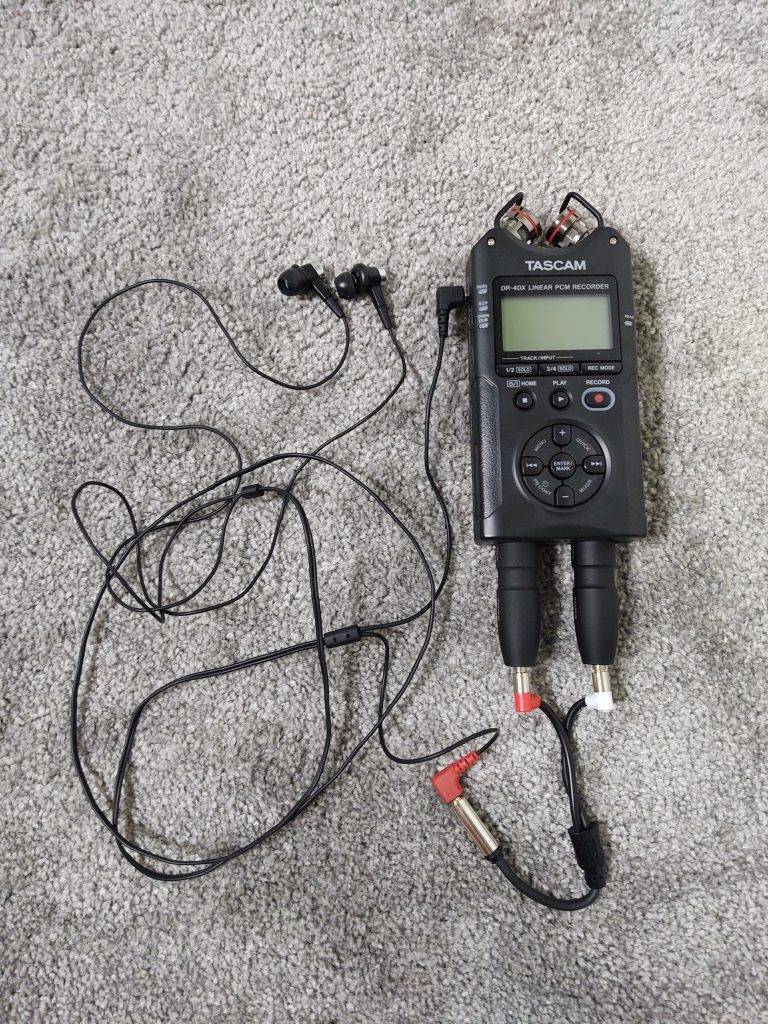

I am sorry to contact you this way, but the link on your contact page appears to be broken. I just heard your composition “Intersidereal – a Minuet of Stars” on YouTube and was wondering if you were planning on making the music available? I realize that you intended it to be used with lights, but the music also stands on its own and sounds like it would be very interesting to learn. BTW – I am a total amateur who usually plays for my dogs and occasionally for the birds in my backyard!
Hi Peggy, thanks for contacting me! The link on my contact page is an image only to avoid spam on my email, but no problem, good to know you found another way.
I’m very happy you enjoyed the music and of course, I’d be glad to send you the score for studying! I will send it to the email you used here, hope that’s correct. I hope your dogs, birds and squirrels will enjoy it! Have a good evening! 🙂
Hello Ian,
I have the same setup as you.
Previously I’ve looked at the Soundman OKM II Classic and they also provide this 6V power supply https://www.thomann.de/intl/soundman_a3_xlr_power_supply_adapter.htm which could also be an alternative but it is more expensive than your solution.
Except for the Rode`s VXLR+ also Deity offers D-XLR power converter for the same price but is a bit longer which might make the recorder bulkier.
Pity that the DR-40X doesn’t have microphone input that could provide the plug-in (bias) power.
Hi Maroš! Thanks for giving these other suggestions,they might be helpful for people looking for more possibilities.
All the best,
Ian
Hi!
I can’t seem to find an audio splitter and i’m going insane haha do you think any of these could work?
Thanks!
https://www.ebay.com.au/itm/165652639348?mkcid=16&mkevt=1&mkrid=705-154756-20017-0&ssspo=mbyhlk0rsq6&sssrc=2047675&ssuid=&widget_ver=artemis&media=COPY
https://amzn.asia/d/8MN1Y2i
Hello Viviana! Unfortunately, this one will not work. This one basically just duplicates the signal, it’s not a real splitter that splits the left and right channels into different connections. Search for “stereo to mono splitter” or “stereo y splitter”. The end of the 2 wires should have one line only (indicating they are mono). Thanks for reading the article and I hope this helps!
I was wondering… do we really need 2x VXLR+ (or similar power converters from other brands)?
Is just 1x VXLR+ enough along with 1x VXLR (no plugin power)?
Thanks in case you still read here 🙂
Hi Simone,
It could be possible to do it with 1 power converter, but the power would have to be distributed to the two ear pieces (R and L are two individual microphones), and that’s where it gets tricky. I guess it would require a custom-made adapter/circuitry to connect 1 XLR converter and 1 normal XLR, so not a straightforward solution unfortunately.
Hola Ian, when you talk about the Philips DVT1110 you mean that with it you can directly plug the roland CS10EM in to the recorder without any adaptor? Also can you suggest other recorder that can works with the CS10EM without using any adaptor? thanks!
Hi Riccardo, yes, that’s correct. The DVT1110 should work. The same for other small portable recorders that can provide plug-in power. The Tascam DR-10 will do it, and other recorders with mic-in like Sony ICD-PX470 should also work.